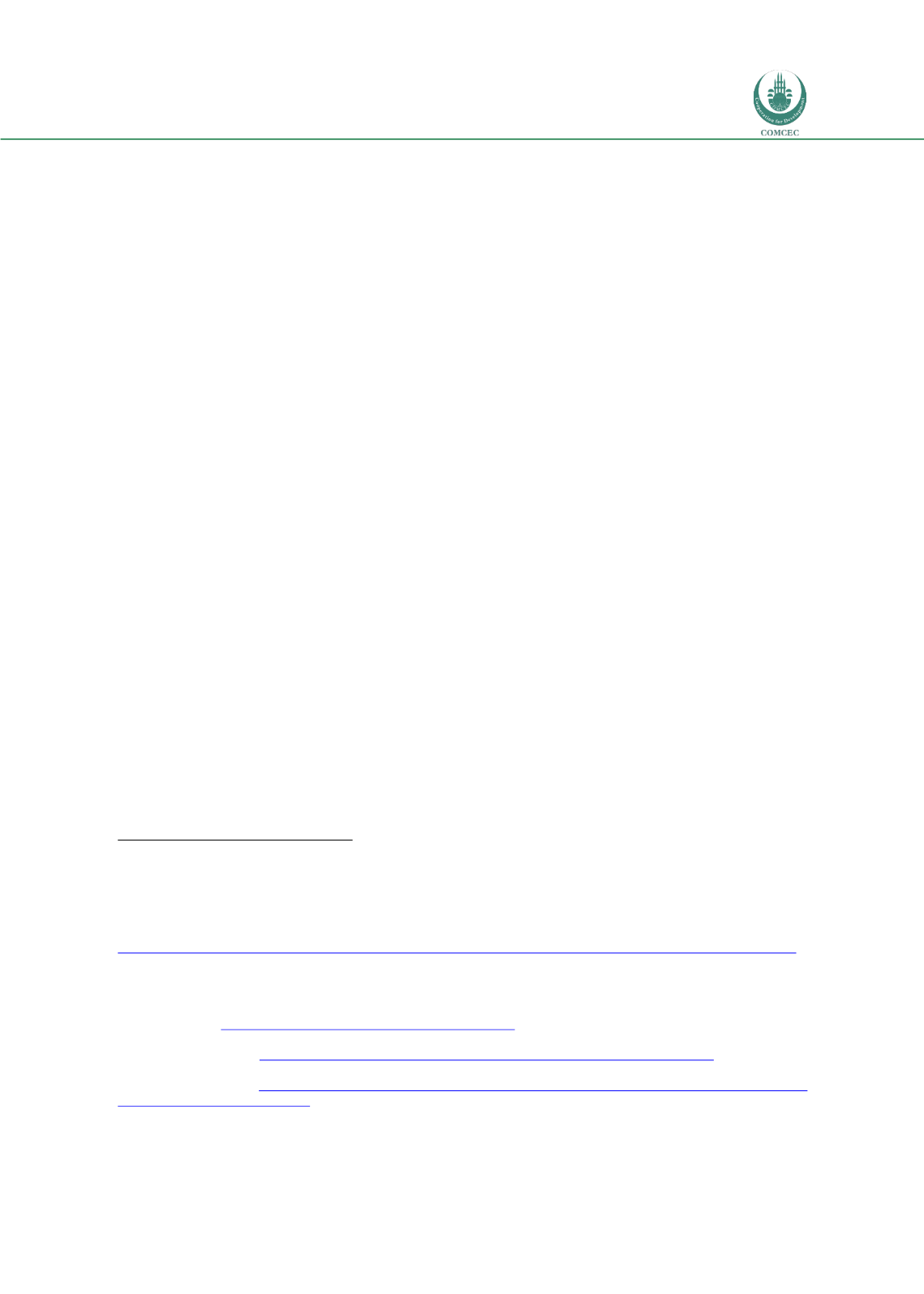

Forced Migration in the OIC Member Countries:
Policy Framework Adopted by Host Countries
115
motivations for moving, including conflict, persecution, and poverty—and only some qualify
for protection under existing international definitions of a refugee. The diverse experiences
and characteristics of forced migrant populations in Morocco highlight the complex task of
providing humanitarian protection.
298
3.3.2.
Legal Frameworks for Forced Migrants
In the absence of national asylum legislation, Moroccan migration law has been defined by
Law n
°
02-03 of 11 November 2003 on the entry and stay of foreign nationals, emigration and
irregular migration. Law 02-03 was enacted in response to Spanish pressure to curb irregular
migration flows and terror attacks in Casablanca in May 2003, which were blamed on
immigrants despite no evidence to support such a claim.
299
The law included heavy sanctions
against smuggling and irregular migration and facilitated the expulsion of irregular migrants
while largely ignoring migrants’ rights.
300
For the next decade, Law 02-03 created a climate in
which migration was harshly repressed and securitized.
In 2013, Doctors Without Borders published an alarming report documenting the ill treatment
of migrants, including refugees, by security forces. The report claimed that the actions of
Moroccan authorities violated the Moroccan constitution and international law, and violated
fundamental human rights.
301
After the release of the report, and Doctors Without Borders’
subsequent departure from the country, the National Council for Human Rights (CNDH) issued
a report with recommendations for the Moroccan government to recognize refugees as
determined by UNHCR, create a national asylum system, and generally create a more
favorable environment for asylum seekers in the country.
302
King Mohammed VI of Morocco supported CNDH’s recommendations, and ordered their
implementation by the government. Since 2013, Morocco has sought to reverse its tough
stance on irregular migration and adapt a more open, humane position toward immigrants,
under pressure from outside critics. This policy shift has led to new initiatives serving
migrants and refugees and a commitment to create a national system for asylum.
Morocco’s Asylum System Today
Morocco is a signatory to the 1951 Convention, the 1967 Protocol, and the 1969 OAU
Convention.
303
While refugee status exists in Moroccan law and can be granted to individuals,
298
Other than the difficulty in making refugee status determinations when some cases more clearly fall under the purview
of the 1951 Convention, these varying experiences also have a large impact on populations’ needs. In a youth consultation
by UNHCR and the Women’s Refugee Commission for example, it was found that young Yemeni refugees were mostly
concerned with their inability to choose an area of specialization at university, while the Sub-Saharan Africans were unable
to access any education due to cost, language barriers and lack of documentation. UNHCR and Women’s Refugee
Commission.
Morocco: National Refugee Youth Consultation “Summary Report,”
(2016),
http://www.unhcr.org/ngo-consultations/ngo-consultations-2016/Morocco_National_Consultation_Summary_Report.pdf299
Gregory White,
Climate Change and Migration: Security and Borders in a Warming World
(Oxford: Oxford University
Press, 2011), 114.
300
de Haas, “Morocco: From Emigration Country to Africa’s Migration Passage to Europe”; Mehdi Lahlou, “Morocco’s
Experience of Migration as a Sending, Transit and Receiving Country” (Working Paper 15, Istituto Affari Internazionali,
September 2015)
, http://www.iai.it/sites/default/files/iaiwp1530.pdf.301
Médécins Sans Frontières,
Violences, Vulnérabilité et Migration: Bloqués aux Portes de l’Europe
, (Geneva : Médecins Sans
Frontières, March 2013)
, http://www2.ohchr.org/english/bodies/cmw/docs/ngos/MSF_Morocco18_fr.pdf302
CNDH,
Etrangers et Droits de l’Homme au Maroc : Pour une politique d’asile et d’Immigration radicalement nouvelle
,
(Rabat: CNDH, 2013),
http://www.cndh.org.ma/fr/rapports-thematiques/conclusions-et-recommandations-du-rapport- etrangers-et-droits-de-lhomme-au303
Despite Morocco’s withdrawal from the OAU in 1984, it never officially renounced its previous legal commitments as a
member state. Therefore, the 1969 OAU Convention is still legally applicable in Morocco. Khadija Elmadmad,
Asile et
réfugies dans les pays afro-arabes
(Casablanca: A. Retnani Editions Eddif, 2002).
















